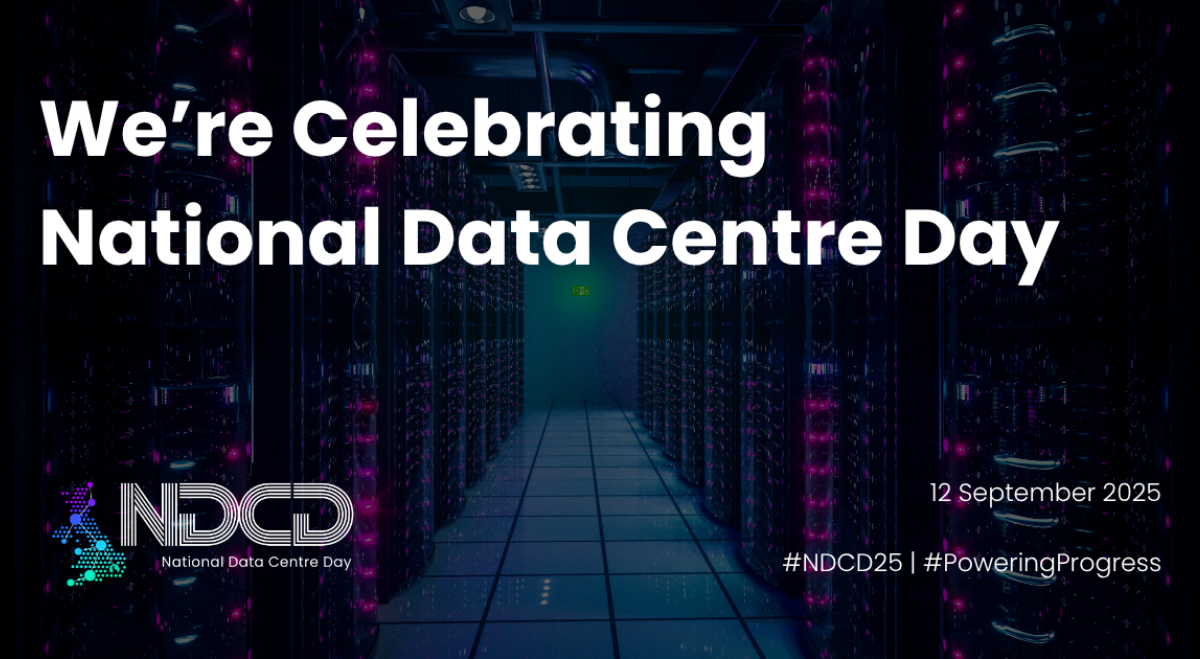
National Data Centre Day | 12th September 2025

Can the UK Build and Support Sustainable Data Centres?
Data Centres are the digital engine of our modern world, processing and storing vast amounts of information that power everything from cloud services to social media. However, this immense power comes with an equally immense environmental footprint. Much has been said in the press about tech giants pushing technology on consumers but many of us unwittingly contribute in individually small but overall significant ways with habits such as keeping thousands of hi-res photos in the cloud, many of which could be downloaded on a static drive.
While advancements in server and cooling technology rightly get much of the spotlight, we need to ensure we build heat recovery systems so the heat is not rejected into the air – reducing waste is key to sustainability.
Additionally, we need to address the lack of power and how we intend to meet the demands of the future. If the UK wants to support the DCs of the future and support the government’s aspirations for EVs, ASHPs and other alternatives to using fossil fuels then we need nuclear power to underpin our power grid – we should continue to use and increase existing green technologies (e.g. solar, wind etc.) but these cannot support the growth alone.
Unfortunately, our system of government does not lend itself to committing to large projects spanning more than 5 years so building new waste heat recovery systems and green power stations is very challenging.
Does the Choice of using Copper or Fibre Cabling Impact Sustainability?
Yes, and it can make a significant difference.
Back in 2008, a network designer at Microsoft asked me which was the most environmentally friendly option between optical fibre and copper cables. This was an excellent question but very difficult to answer, there were so many variables and considerations!
Power over Ethernet (PoE) is a technology that can only be supported by copper cabling. Furthermore, copper cabling is the preferred choice for office designs and specific network types due to the distributed nature of end devices like laptops, PCs, IP phones, and Wi-Fi access points. Because each device requires its own dedicated circuit, a single multicore fiber optic cable cannot be used to connect them all.
Although twisted-pair copper can support up to 40Gbps, going above 10Gbps requires Cat8 which is expensive and is limited to 30m. For this reason, the vast majority of DCs would use fibre for the higher speed networks.
Lower bandwidth networks including OOB and IB management would usually use copper switches but there are some fibre versions available (e.g. Lantronix, Perle Systems, ZPE Systems, and Opengear) meaning the core count already running to the racks to support the higher speed networks could be increased.

From a sustainability perspective, it’s hard to make an argument for using bulk copper in a DC:
Fewer cables: it’s possible to buy 144F fibre cables able to support 72 duplex circuits which are the same size as a Cat6A cable supporting a single circuit. Think of the reduction in plastics alone!
Reduced Pathway Space: on a per circuit basis, optical fibre cables are much smaller so smaller trays/baskets/ducts are required and possibly fewer of them.
Bandwidth: it’s considerably higher on optical fibre cables, especially if SMF is used, so the cables would require changing less often.
Power: fibre switches use less power and therefore require less cooling
Recycling: putting aside the sheath material and dialectric/cladding plastics, fibre optic cores are very expensive to recycle and have limited value. However, the number of circuits per cable and the longevity (due to the increased bandwidth) are considered to outweigh this point.
Environmental: the mining of copper can cause issues with water and air pollution. By contrast, optical fibre optic cables are made from silicon dioxide, which is derived from silica, one of the most abundant minerals on Earth.
Chemicals: used to make the cables – fewer required per circuit*
* Although the quantity of chemicals per fibre cable is higher (e.g. silicon tetrachloride to form the silica glass structure), when considered on a per circuit basis in higher core count cables, it is lower than copper.
Can the Choice of Network Cabling Manufacturer Affect Sustainability?
Yes, and this is often overlooked.
Many businesses now consider the embodied carbon in the products it buys in addition to any operational emissions.
A great example often cited to illustrate this point is EVs. They may consume zero carbon when used (if the power source is 100% green – unlikely to be the case 100% of the time in the UK) but what about the embodied carbon in the car and any new parts required over it’s lifetime such as tyres and brakes? Compared to an ICE car, the embodied carbon is much higher but, despite this, in most cases, the EV wins out from as little as 30k miles. Of course, this is a very simplistic view and there are other major considerations such as the ability to recycle parts – this is currently a major issue with EV batteries.
Back to cabling: it doesn’t have any operational emissions like a car, the carbon is all embodied* so where and how it’s made, where the energy comes from, the packaging and how it is transported to the final destination are the major considerations.
The variance in embodied carbon between network cabling manufacturers is big, and more companies are asking for the embodied carbon. Surely it’s only a matter of time before the UK government follow the lead from some of the EU countries and offer tax breaks for products with the lowest embodied carbon.
*Copper cables give off heat but, for the purposes of this comparison, that heat is considered the heat given by the network hardware at either end of the link. However, it should be noted that smaller gauge cables will increase resistance and give off more heat.



Leave a comment